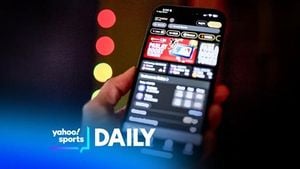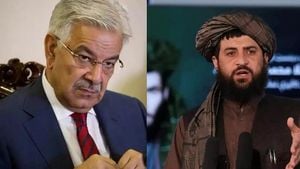The debate over public funding and display of LGBTQ+ pride symbols has taken center stage in two very different corners of the United States, highlighting a patchwork of legal and cultural responses to LGBTQ+ visibility and rights. In Alabama, the state government’s financial support for Central Alabama Pride events in 2024 and 2025 has drawn attention to the role of taxpayer dollars in promoting inclusivity. Meanwhile, in Hamtramck, Michigan, a federal judge recently upheld the city’s ban on LGBTQ+ pride flags from public flagpoles, underscoring the ongoing tension between free speech, religious beliefs, and municipal authority.
According to the Alabama Department of Finance, the Alabama Tourism Department spent a total of $7,800 in taxpayer dollars to fund Central Alabama Pride events over two years. The breakdown is clear: $2,600 was allocated in 2024, and $5,200 in 2025. This financial backing supported a range of activities during Central Alabama Pride Week 2025, which took place in June. The celebrations included a pride drag brunch, a lively pride parade, and appearances from stars of the popular television show RuPaul’s Drag Race. These events, organizers say, aimed to foster community, visibility, and acceptance for LGBTQ+ individuals across the region.
This public investment in pride events stands in sharp contrast to the situation in Hamtramck, Michigan, where the city council’s decision to ban LGBTQ+ pride flags from publicly owned flagpoles sparked a heated legal battle. On Monday, September 8, 2025, U.S. District Judge David Lawson issued a ruling that sided with the city. Judge Lawson dismissed a lawsuit challenging the ban, concluding that Hamtramck’s policy did not violate the Constitution.
Hamtramck’s city council, which is composed entirely of Muslim members, voted two years earlier to restrict public flagpoles to only five flags: the American flag, the Michigan flag, and flags representing the international character of the city’s residents. The move came after pride flags had been flown in June 2021 and June 2022, which some council members said conflicted with their religious beliefs.
Critics of the Hamtramck policy argued that the ban amounted to a violation of free speech and an attempt to suppress LGBTQ+ expression. However, Judge Lawson’s ruling was unequivocal. As reported by the Associated Press, he stated, "Hamtramck’s refusal to display the Gay Pride flag did not violate the Constitution." The judge reasoned that because the city’s policy bans all private flags, not just pride flags, it does not discriminate against any particular group.
Despite the ban on public flagpoles, businesses and residents in Hamtramck remain free to display pride flags on their own property. The city, an enclave surrounded by Detroit, is known for its rich cultural diversity. With a population of about 27,000, more than 40% of Hamtramck’s residents were born outside the United States, according to the U.S. Census Bureau. Many are of Yemeni or Bangladeshi descent, and the city has become a symbol of immigrant success and multiculturalism.
Hamtramck’s mayor, Amer Ghalib, himself a native of Yemen, was recently nominated by President Donald Trump to serve as U.S. ambassador to Kuwait. His nomination highlights the city’s unique place in American politics and the intersection of local and national identities. The city’s evolving demographics and leadership have played a significant role in shaping its policies and public debates—including those surrounding LGBTQ+ rights.
Meanwhile, in Alabama, the state’s choice to fund Central Alabama Pride events has been met with both celebration and criticism. Supporters argue that the funding reflects a commitment to diversity and tourism, and that pride events contribute to the state’s economy by attracting visitors and promoting positive visibility. The inclusion of high-profile guests, such as RuPaul’s Drag Race stars, has helped draw crowds and media attention, boosting the profile of the event and, by extension, the region.
Opponents, however, have questioned the use of taxpayer dollars for events that some consider controversial or not representative of all constituents. The debate mirrors broader national conversations about the appropriate role of government in supporting or regulating expressions of identity and inclusion. In Alabama, as elsewhere, pride events have become a flashpoint for discussions about public values, fiscal responsibility, and the meaning of community.
The contrast between Alabama’s public support and Hamtramck’s public ban is stark. In one state, government funding is used to celebrate LGBTQ+ culture and foster a sense of belonging. In the other, municipal policy restricts the display of LGBTQ+ symbols on public property, citing the need to respect the diverse beliefs of residents. Both approaches, their supporters claim, are rooted in a desire to reflect the values and character of their respective communities.
Legal experts note that Judge Lawson’s ruling in the Hamtramck case could have far-reaching implications. By upholding a policy that bans all private flags from public flagpoles, the decision sets a precedent that other municipalities might follow if they wish to avoid legal challenges while restricting certain symbols. The judge’s reasoning—that a neutral ban on all non-official flags does not constitute viewpoint discrimination—provides a potential roadmap for cities navigating similar controversies.
At the same time, the Alabama Tourism Department’s funding of pride events demonstrates how state agencies can play an active role in promoting inclusivity and economic development. For LGBTQ+ advocates, such support is a sign of progress and recognition. For critics, it raises questions about the boundaries between government, culture, and individual beliefs.
Both Alabama and Hamtramck are, in their own ways, microcosms of the larger American debate over LGBTQ+ rights, religious freedom, and the meaning of public space. The conversation is far from settled. As pride events continue to evolve and as legal challenges make their way through the courts, the nation will likely see more clashes—and collaborations—over how best to balance the competing interests of inclusivity, expression, and community values.
In the end, the stories of Central Alabama Pride and Hamtramck’s flag policy serve as reminders that the question of how—and whether—to publicly celebrate LGBTQ+ identity remains deeply contested, shaped by local histories, demographics, and the ever-shifting landscape of American law and politics.




